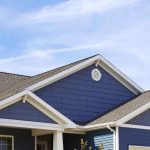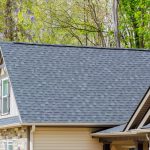Taking steps to make your home safe during the winter is important, but essential for the elderly, who are prone to serious injury from even a simple cold weather slip and fall. Make sure you run through the following checklist before the winter weather sets in.
Home Heating Safety
Keeping warm during the winter can mean lighting a fireplace, gas heater or lantern, but without proper procedures in place, these can lead to carbon monoxide poisoning. Before winter gets into full swing, check the batteries on your carbon monoxide detector, or buy a new one if you need to. Here are a few other tasks to tick off your list:
- Have chimneys and flues inspected regularly, and cleaned when needed.
- Make sure that windows are opened just a crack during the winter, especially when burning kerosene, to allow for air circulation.
- Place a working smoke detector outside of every bedroom and sleeping area, and on every floor of the house.
- Keep space heaters at least 3 feet away from anything that might catch fire, like curtains, bedding and furniture.
- Check that fire extinguishers are functional, have not expired, and can be used for a variety of fires, including chemical.
- Never heat your home using a g as stove or charcoal grill.
Some seniors may need help checking their devices, so consider asking elderly friends, family and neighbours if they need a hand this season.
Keep Walkways Clear
Snow and ice on driveways is always treacherous but can present a significant danger to seniors, who are more prone to serious injury from slips and falls.
Keep walkways, paths and stairs clear of obstructions, and they should be shovelled and salted immediately following snowfall o prevent accidental falls. These areas can be particularly dangerous if snow is left to turn into ice –
Indoor Safety
Older neighbourhoods and older homes may suffer from power outages during the winter, so making the interior as safe as possible is key for seniors.
You may need to rearrange furniture so that your path is clear to make your way around a room in the dark, and you should create clutter-free zones on stairways, in hallways and in high-traffic pathways.
Installing brighter lights and night lights in hallways, bathrooms and other high traffic areas can help improve visibility and avoid trips and falls in the dark.
Use non-slip strips on stairs, in the bathroom and in the kitchen, and rubber mats in areas that typically get wet, like entry ways, to help maintain balance.
Install safety rails on stairs, grab bars in the shower or tub and near the toilet to improve stability and also help avoid falls.
After you’ve ticked off the tasks on your own home prep check list, reach out to elderly friends, family and neighbours and offer a hand to those who may need an extra hand.





